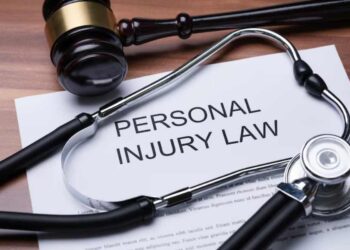It’s a scary and unsure time after a bike accident. It might be that you get knocked over, or that your bike breaks, or that you don’t know what to do.
Here’s the thing…
Your life and your legal rights can be saved if you take the right steps immediately after your crash. Bicycle accidents are increasing exponentially – there were 42.7% more deaths than in 2010 based on most recent data – no matter what the type of crash it was, it is now more important than ever to know what you do immediately after the crash.
Your Step-by-Step Guide:
- What You Can Claim After A Bicycle Accident
- Critical Preliminary Intervention at the Scene of an Accident
- Medical Documentation Essentials
- Preparing Your Prosecution’s Materials
- Working with Insurance Companies
- Where To Turn For Legal Advice If Needed
Things You Need To Know If You Were Injured In A Bicycle Accident
But you have certain legal rights if you’re a cyclist in an accident. Most people who ride bikes don’t realize that they are on the same side of the road as drivers.
Since 82% of bicycle deaths occur in urban areas, cyclists in metro areas like New York are especially vulnerable. A skilled New York City bicycle accident lawyer will take you through it all and defend you in every aspect.
Your rights include, but are not limited to:
- Medical compensation and benefits
- Salaries replacement payments
- Pain and suffering compensation
But here’s the catch…
These rights must be secured by the correct conduct you exhibit right after the accident. Here’s what you should do.
Key Initial Steps at the Car Accident Scene
It’s what you do within the first minutes after a bike accident that will save or destroy your claim. The things you will have to do are fairly straightforward:
- Get to Safety First
- Move away from traffic and from your bike if possible.
- Stay cool and check how your body is doing.
- If someone is seriously hurt, dial 911.
- Document Everything!
- Photograph where the accident happened.
- Make a note of your injuries and ruined gear.
- Record the weather and the road.
- Gather Information
- Driver’s Name, Address, Phone Number.
- Vehicle license plate number.
- Insurance information.
- Name and location of witnesses, if any.
Do you know what the best is?
Most of us have smartphones so it’s easy to keep track of. So, go grab as many photos and videos as you can – you never have enough evidence.
Medical Documentation Essentials
Even if you’re okay, you need to:
- Arrange a physical examination as soon as possible.
- Take notes of all symptoms, no matter how trivial.
- Make a diary of medical tests and therapies.
- Record wounds while they heal.
- Print out all the receipts and bills.
Here’s why this matters…
The traumas – head trauma in particular – can be undiagnosed. With 62.2% of the cyclists killed having been riding without a helmet, head injury is a real threat that must be treated and reported.
Preparing Papers For Your Case
You can leave very little traces of a bike crash. You have to put away: to stand your ground.
Physical Evidence:
- Your spindly bike and chains.
- Torn or bloodied clothing.
- Damaged bike parts or accessories.
Digital Evidence:
- Photographs of the accident scene
- Videos of road conditions
- Screenshots of weather reports
- Video footage from traffic camera (if available)
Documentation:
- Police report copies
- Medical records
- Insurance correspondence
- Witness statements
Working with Insurance Companies
It’s not an easy act with insurance companies. They will attempt to keep payouts as low as possible or deny them altogether.
The gist is:
- Do not make a single outing in sworn testimony without first consulting an attorney.
- Never accept the first settlement offer.
- Write down all correspondence to insurance companies.
- Keep track of claim numbers and adjusters.
- Keep a copy of all letters.
The truth is…
Insurance companies are not looking out for you – they are after your money. This is why legal advice matters.
When to Seek Legal Help
And legal help with a bicycle crash comes at the right time. Contact a lawyer if:
- You suffered significant injuries.
- The driver was uninsured or underinsured.
- You’re paying more than your insurance covers.
- You weren’t at work due to injuries.
The fact is…
A professional bike accident attorney can help you collect a substantial settlement. They will get you through difficult legal jargon while you recover.
Common Insurance Company Tactics
But do you know what the majority of cyclists don’t?
Bicycle accident settlements are experts in minimizing bicycle accident claims. And the more bicycle accidents keep happening, the more aggressive these companies become.
Here’s what to look out for:
Quick Settlement Offers:
- They may provide immediate cash when it is the most convenient for you
- The first price is almost never cheap enough
- They want you to consent before the extent of the injury. Immediate Injuries:
- Road rash and cuts
- Broken bones
- Head trauma
- Spinal injuries
Long-Term Effects:
- Chronic pain
- Mobility issues
- Post-traumatic stress
- Lost work capacity
But here’s what the rest of us never think twice about…
The trauma of a bicycle accident doesn’t usually come to the fore. And that’s why records and treatment are the key from the beginning.
Calculating Your Damages
But what most cyclists know…
And the true cost of a bike crash is much more than hospitalization and bike repairs. You have to consider making the case and making the case…
Economic Damages:
- Medical bills from the past and present
- Lost wages and income
- Property damage costs
- Transportation expenses
- Rehabilitation costs
Non-Economic Damages:
- Pain and suffering
- Emotional distress
- Loss of life’s enjoyment
- Permanent disability impact
And here’s the kicker…
That’s all you’ll need to show in order to sustain these losses. Take all the receipts, photo them all, and write every day how your injuries have changed your life.
Dealing with Hit-and-Run Accidents
A hit-and-run is a sad reality for cyclists since more than one in five bicyclists die from alcohol-related causes.
If you’re hit-and-run:
- Document Everything Immediately
- Memorize as much information as you can on the vehicle
- Remark on which vehicle the driver took off
- Find out about the security cameras at your place
- Take pictures of junk you see in the rubble
- Find Witnesses
- Ask anyone who saw the crash.
- Get their contact information
- Ask them whether they took pictures or videos.
- Confirm witnesses in other companies.
- File a Police Report
- Call the police immediately
- Provide all available information
- Make a copy of the report.
So the moral of the story is… be careful out there and always be prepared!










